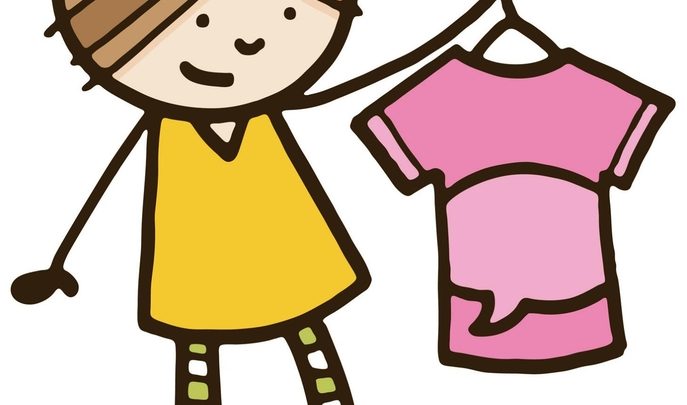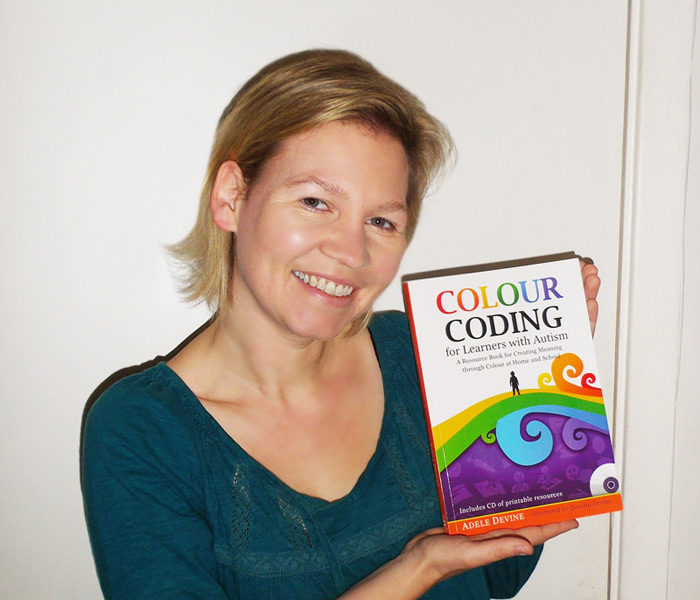Fashion Victims – Why Clothes Can Cause Sensory Issues For Young Children

Sensory issues surrounding hats, coats, shirts and shoes must be handled with care, explains Adele Devine…

- by Adele Devine
- Early years and SEN specialist, author, keynote speaker and trainer Visit website

Most of us have clothes in our wardrobes that we never wear. Maybe they feel too tight or too hot. Maybe they’re too formal, too casual or associated with a bad memory? Keep that in mind.
Now imagine that you’re full of cold, hot, tired and generally want to hide under a duvet. You’ve struggled through work and hadn’t planned on going anywhere. Suddenly there’s a colleague at the door, telling you about a karaoke night you didn’t know was planned. They’re expecting you to go and sing on stage. Next, they produce that outfit you never wear and say you have to put it on. Oh, and the whole thing will be broadcast live on television – so no pressure.
How would you feel?
Labels like razors
When a child resists changing into their wellies or putting on a coat before going out in the rain, it could be due to sensitivity or anxiety. Clothes sensitivities are real and can cause overwhelming distress, which is heightened when you add in the unfamiliar or unexpected.
The last thing you should ever do is force a child into doing something that alarms them. Even if you cannot see, feel or understand what is causing the issue, do believe that there is an issue. That label might feel like a razor blade scratching their neck; the idea of wearing a differently coloured T-shirt might seem to them how you would feel wearing a skimpy black dress to school.
So, look for ways to reduce the sensitivity by adapting the clothes. Reduce your expectations and choose your battles. Listen to the child, speak with their parents, past teachers or childminder. When we try to overcome issues with clothes that ‘hurt’, we must do so in a sensitive and respectful way.
Be aware
If clothes sensitivities aren’t tackled, they can become a huge issue. Look out for the child who has all their labels cut out, or who wears the same thing every day. Introduce games that involve dressing up, and if you spot a potential issue, speak to the child’s parents. There is a window of opportunity when children are little. We can significantly reduce the chances of them becoming ‘stuck’ wearing only one colour, outfit or pair of shoes.
Case study: Ned’s New Shoes
Ned had huge sensory issues about clothes and shoes. He would wear the same style of T-shirt and trousers to school every day. Over the summer Ned’s feet had grown and his Crocs (the only shoes he would wear) had become too tight.
Ned’s mum had sent in an identical pair, hoping that we would be able to get Ned wearing the new ones. After a lot of convincing and a social story about growing feet, Ned agreed to try them. He put one foot in, but instantly pulled it out as if it burnt him. He could not keep wearing the old Crocs, yet they were too tight. What were we going to do?
Communication I spoke to Ned’s teacher from the previous year looking for ideas, and came upon a solution. She said that she had eventually used sandpaper to make the soles of Ned’s Crocs smooth.
Lots of sanding followed.
Ned tried on his new Crocs again and walked around in them. They were much better and clearly not causing him pain – but then he went back to his old reliable Crocs and would not let them go. The new Crocs felt okay, but Ned was still resisting change.
Outcomes and solutions The next step needed to be final. We spoke with Ned’s mum, who agreed to ‘accidentally’ break the old Crocs so that they had to be thrown away. Now Ned had no choice, but to accept the new ones!
Sometimes cutting, stitching and even sanding, as this case shows, are necessary, but other strategies can work too. Consider using social stories to prepare children for new clothes, as well as schedules to give warning of any impending activities that may require a change.
Make use of children’s interests – a favourite character, or even colour – and model the desired behaviour. Finally, don’t be afraid to compromise to make progress; take your time and build trust.
Case study: Setting Sam up to succeed
When Sam started nursery it was clear he had some sensory issues. He would become really upset by other children’s noise and cover his ears to keep out the sound. Some noises even made him cry. He would also walk on his toes a lot. I noticed, too, that over the first few weeks that Sam attended nursery, he wore the same Disney T-shirt, tracksuit bottoms and shoes to school every day.
Investigating further I wanted to find out whether Sam was also sensitive about his clothes. During a telephone conversation with his mum, I therefore took the opportunity to ask about why Sam always came into nursery in the same outfit. Were the T-shirt and tracksuit trousers the only clothes he would wear? Sam’s mum said that, actually, he was fine with clothes and didn’t have an issue.
Taking action Armed with this knowledge, I then asked Mum if she wouldn’t mind varying what Sam wore to school each day. I’ve seen too many children get ‘stuck’ with clothing over the years, and wanted to avoid this becoming a problem for Sam.
Sam’s mum understood, and from then on varied the clothes he wore. Sam started coming to school in different shirts, trousers and shoes without a problem. It may never have become an issue, but I was glad that we had acted, just in case.
The Ouch! Factor
10 reasons children may respond negatively to clothes…
1. Labels This can be resolved easily by cutting labels out
2. Textures The material might feel horrible to the child
3. Temperature Experiencing extreme reactions; being hyper- or under-sensitive
4. Reasoning For example, “Why must I wear a coat and gloves in winter?‘
5. Anxiety If you can change their clothes, what other aspects of their life might you change?
6. Newness Children may be unwilling to try anything new, for fear that it might hurt
7. Colour Some children will only wear one or two colours
8. Sound Does the fabric of the offending item of clothing make a sound when it rubs together?
9. Routine Children may get used to always wearing set clothes in certain situations
10. Control Children may not want to be told what to wear…
Adele Devine teaches full time in an autism specific school and is co-founder of the software developer, SEN Assist. For more information, visit www.senassist.com or follow @AdeleDevine










